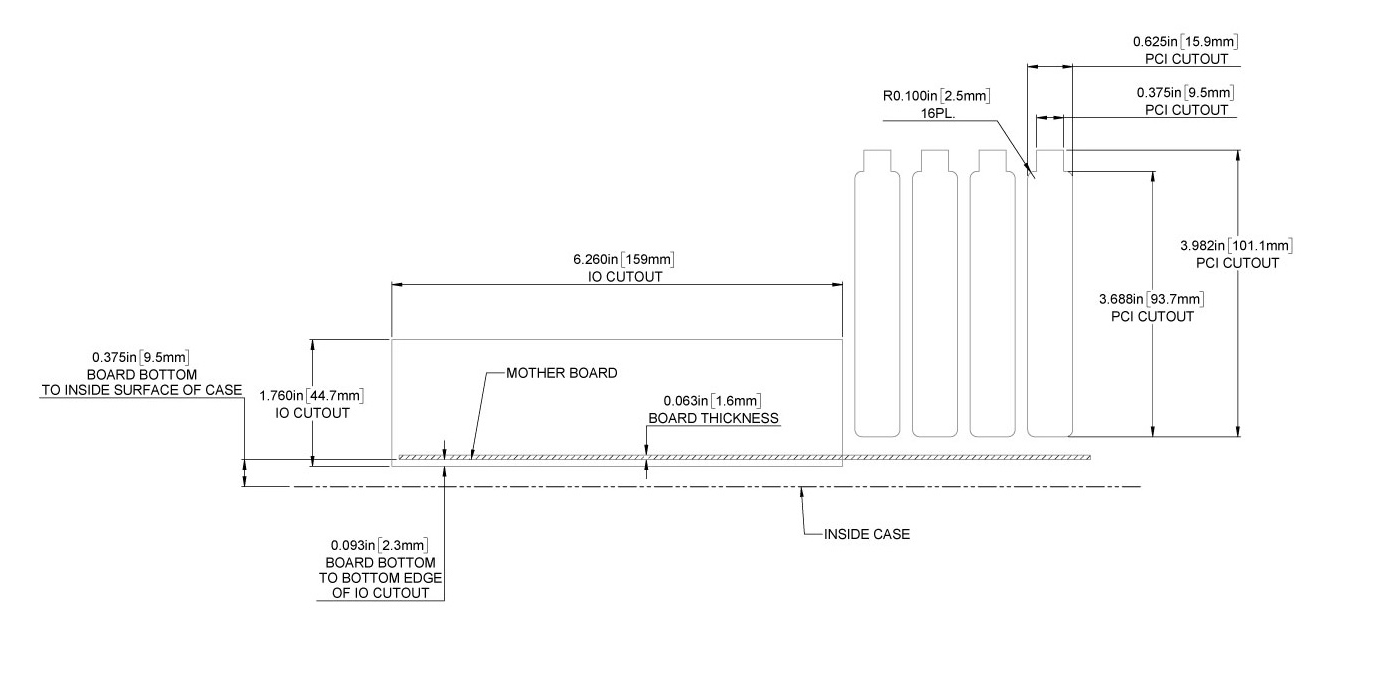Standard Slot Dimensions
Continue placing racks a minimum of 36', 48' ideally, from one another. Begin another column allowing for 48' - 60' between wheels. You can use the 72' (96' recommended) measurement of a parked bicycle and desired aisle measurement to determine spacing between columns of bike racks. Pick the slot on one side and apply a dimension something like. The outline of your raised surface is controlled with respect to your primary datums. The width of each of your four slots is controlled with respect to sides of your raised surface. The outside edge of the slot winds up where it winds up. Wiha quality tools. Color Coded Ball-End Hex L-Keys; Chrome Finish Ball-End Hex L-Keys; ErgoStar Ball-End Hex L-Key Sets.
Using Standard Lots. A standard lot is a 100,000-unit lot. That is a $100,000 trade if you are trading in dollars. Trading with this size of position means that the trader's account value will fluctuate by $10 for each one pip move. Our manufacturing abilities allow us to create slot machine bases, slot machine cabinets and slot machine stands in any configuration. Select high-quality metal, wood, or hybrid wood and metal construction, all with superior internal access to make best use of your floor space. Fully-customizable dimensions and features.
With the new year setting in, I decided to do replace my kitchen sink to give my kitchen a new look. So while I was researching on the essentials to consider when replacing a kitchen sink, I found out that sizes play a major role. Imagine spending plenty of dollars on a new sink only to realize it doesn’t fit comfortably or just not well enough. So I thought I would share my findings with you which can assist you in making better decisions when choosing a size for your kitchen sink.
So what is the standard kitchen sink size? While the standard kitchen sink size measures 22-by-30 inches (Length by Width), sink sizes generally depend on the interior width of the sink’s cabinet. On an average, cabinets measure 36 to 42 inches high, 24 inches deep and 25-1/4 to 26 inches wide. Although a 36-inch base cabinet can be filled by a 33-by-22 inch kitchen sink comfortably, the standard 22-by-33 inch sink size can fit well within these dimensions as well.
However, the average size will have its own variations depending on different features varying from the material of the sink to the environment where a kitchen sink is installed. Think of an instance where the kitchen size is too small to install a standard size sink. This is why it is important to get a thorough understanding of this topic, before making a selection.
Standard Kitchen Sink Sizes
As I mentioned above, the average size of a sink is 22-by-30 (Length by Width) inches which can fit well with the standard interior width of sink cabinets (36 to 42 inches high, 24 inches deep and 25-1/4 to 26 inches wide).
If you are opting for a smaller sink size as a result of smaller kitchen space, the most common small kitchen size measures 24-inches wide and often comes as a square D-bowl. A 27-inch sink base cabinet would be most likely to comfortably fit the dimensions of a small sink (24-inches width).
The most commonly installed kitchen sink size measures 30 inches wide, which gives a variety of choices when it comes to shapes, such as single bowl orca/square and double bowl. This normal size (30 inches wide) can comfortably fit in at least a 33-inch base cabinet.
If you have a larger kitchen area that can smoothly accommodate a larger sink, the average size of a large sink measures 33 inches or 36 inches in width, which is often available in the single or double bowl shape.
These sizes and dimensions are highly recommended if you’re planning to completely replace the sink, including the cabinet and/or countertop, as this will give more freedom to choose the most suitable size of your choice. In contrast, if you are planning to replace just the sink, it is important that you take accurate measurements of the cabinet and/or countertop that is connected to the sink before making a decision on the sink size.
Standard Punch Slot Sizes
Although a quality sink can last for a longer period, frequent use can cause scratches and eventually wear over time. Hence, in addition to size, it is important to consider what the sink is made out of. Varying among options such Stainless Steel Sinks, Acrylic Kitchen Sinks, Porcelain- Copper Kitchen Sinks, Enameled Cast Iron Sinks, Fireclay Sinks, Stone – Granite/Composite/Marble Sinks and Solid Surface Sinks, each option has its own specialty.
However, due to the cost-effectiveness, durability, and longevity, stainless steel skinks are the option most homeowners opt for. Hence below are the size options available for a stainless steel kitchen sink.
Sizes of stainless steel sinks
Stainless steel skins are measured by gauge, the lower the gauge number the better the thickness, durability, longevity and is equally expensive. For example, an 18 number gauge stainless steel sink provides longer wear and tear over a 22 number gauge stainless steel sink.
The standard size of Stainless steel kitchen sink is measured at 19 gauge which is cost-effective for a kitchen sink. However, the better quality comes with an 18 gauge, which is 0.0500 inches. Many findings have recommended 16 to 18 gauges as a choice for kitchen sink improvement. As I mentioned earlier the lower the number of the gauge the better the quality, hence a 16 gauge stainless steel sink with a thickness of 0.0625 is considered to be a luxury sink.
Restaurants and other commercial establishments, on the other hand, use commercial gauges which have a range between 14 to 16 gauge, that is large and deep intended for hard and frequent use.

It would have been clear by now that not all sink sizes, types and style suit every environment that a kitchen sink needs to be installed. Depending on the environment and its requirements, the average size of a kitchen sink varies, which can be as follows.

1. On general high volume restaurants or hotels opt for compartment sinks for their kitchens, which makes it easier for dishwashers or chefs to efficiently organize, wash, rinse and sanitize dishes or to complete multiple tasks at once, in separate convenient compartments. While the average size of one compartment sink without drain board measures 25 inches in length, 27 inches in width, 45 inches in height and 14 inches in depth, the lengthiest compartment sink on average has four compartments very often. The four compartment sink without drain board on average measures 97 inches in length, 27 inches in width, 42 inches in height and 12 inches in depth.
2. A house kitchen can have an average of 22-by-30 (Length by Width) inches with an 8-10 inches depth (While a deeper sink makes soaking pans and pots easier, a less depth can make the sink shallower and easier to use).
T Slot Dimensions Standard

Similar to shallower sinks, many house owners prefer double bowl sinks over single bowl sink for convenience purposes. From being able to use one side of the sink i.e. one bowl specifically for garbage disposal to using separate bowls for soaking and cleaning pots; a double bowl sink creates more space for multitasking. For example, one bowl of the sink could be used for cleansing and sanitizing purposes, while the other can be used for washing hands and filling pots, which is ideal for a busy home. So below is a size guide for double bowl sinks that can assist you in purchasing one.
Double Bowl Kitchen Sink Sizes
A double bowl sink is one sink separated by two bowls, making it “Double Bowl”. Although this sink comes readily available in many sizes due to its convenience for house owners, the standard size of a double bowl sink is 33 inches in length, 22 inches in width and 8 inches in depth. Size of 36 inches in length are also common, with the availability of 10-inch depth sinks if needed.
Double bowl kitchen sinks can get wider as 48 inches. However, the bowls can be equal in size or smaller or larger than the other, depending on your preference and need.
Related Questions
What is the standard kitchen sink height?
Sink heights often depend on the height of the people in the home and based on personal preferences. However, the average height of a kitchen sink with inset countertops and/or cabinets stands at around 36 inches high.
On the other hand, an average height of 34 inches from the rim of the sink to the finish floor is expected to be the standard height for sinks that follow ADA (Americans with Disability Act) requirements.
Standard Slot Size
How deep should a kitchen sink be?
On average the depth of the kitchen sink today ranges between 8-10 inches, while it can go up to 12 inches deeper. However, this again depends on the height of the people in the house or the ones that often use the sink.
As mentioned above shallower sinks are convenient to use and usually is less than 8 inches in depth. This will make it easier for people with an average height or shorter to work in the sink without having to lean when reaching to the bottom of the sink. Similarly taller people can work with the sink without having to crouch.
T Slot Size Chart
On the other hand, deeper sinks often are more than 10 inches in depth. Deeper sinks are ideal if you are a frequent user of large or many dishes. This will help soak many dishes in the sink and also helps washing larger vessels without water splashing over the countertops and/or the cabinet adjoined below.